2017-10-19 - Nº 129
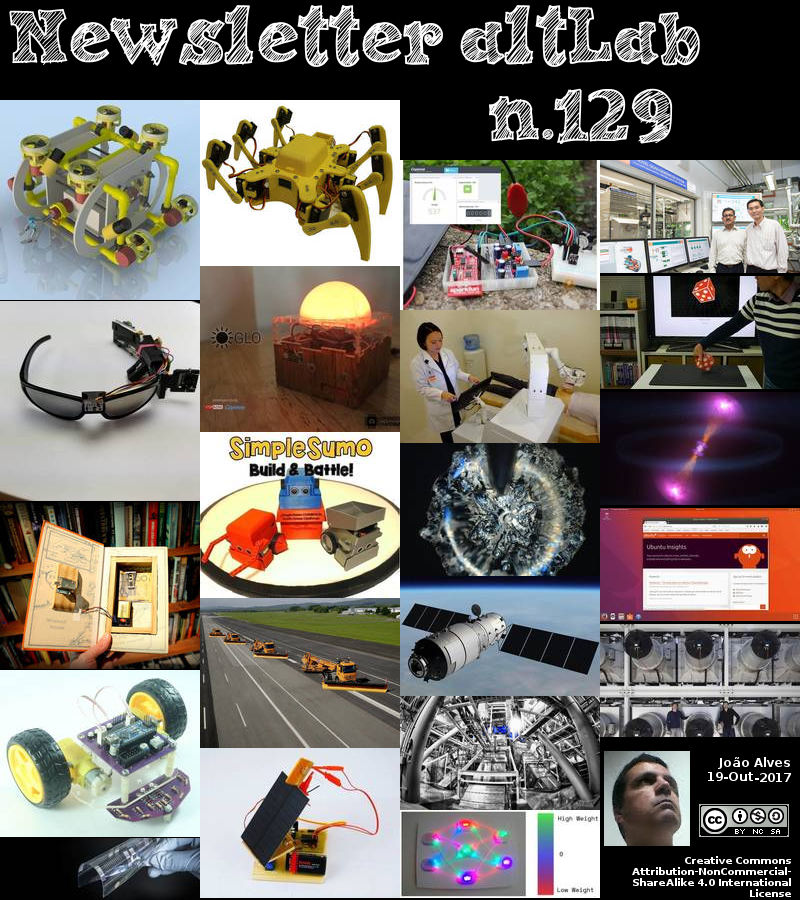
Editorial
Esta é a Newsletter Nº 129 que se apresenta com o mesmo formato que as anteriores. Se gostar da Newsletter partilhe-a!
Todas as Newsletters encontram-se indexadas no link.
Esta Newsletter tem os seguintes tópicos:
Faz hoje anos que nascia, em 1862, Auguste Lumière. Nascido em Besançon na França este inventor juntamente com o seu irmão Louis foram os primeiros cineastas da história. Eles patentearam um cinematógrafo melhorado, que em contraste com o kinetoscope de "Peepshow" de Thomas Edison permitia a exibição simultânea para várias pessoas.
Faz também anos hoje que nascia, em 1872, Jacques E. Brandenberger. Este químico suíço ficou conhecido na história por ter inventado o papel celofane.
Faz igualmente anos hoje que nascia, em 1909, Marguerite Perey. É atribuída a esta química francesa a descoberta do último elemento químico descoberto na natureza antes de ser sintetizado - o frâncio. Trabalhando como assistente de Marie Curie, Perey concentrou-se no actínio por muitos anos porque foi considerada uma possível fonte de franco por enfraquecimento. No entanto, a purificação necessária de actínio e concentração exigiu dezenas de procedimentos difíceis e cuidadosos. Depois de enviar uma tese sobre seu trabalho no elemento 87, em 1946, ela obteve um diploma de doutorado em física.
Por fim, faz anos hoje que nascia, em 1910, Subrahmanyan Chandrasekhar. Este astrónomo e astrofísico norte-americano de origem indiana ficou conhecido por ser um dos primeiros cientistas a combinar as disciplinas da física e da astronomia. Foi ele conjuntamente com William A.Fowler que formularam a teoria actualmente aceita nos estágios evolutivos posteriores de estrelas massivas (o que levou à descoberta de buracos negros e estrelas de neutrões). Esta mereceu o prémio Nobel da física em 1983. No início de sua carreira, ele demonstrou que há um limite superior, agora chamado de limite Chandrasekhar, para a massa de uma estrela anã branca. (Uma anã branca é a última etapa da evolução de uma estrela como o Sol, que termina com o colapso quando a fonte de energia nuclear no seu centro se esgotou). Além disso, mostra que as estrelas muito mais massivas do que o Sol devem ser explodir ou formar buracos negros.
Na semana que passou ficámos a saber que a primeira fábrica de emissões negativas de dióxido de carbono começou a operar. Produzimos 40 mil milhões de kg de dióxido de carbono a cada ano, e estamos no caminho para ultrapassar um limiar de emissões crucial que causará aumento de temperatura global para passar o perigoso limite de 2°C estabelecido pelo acordo climático de Paris. Mas os cientistas do clima já estão a falar sobre uma tecnologia que poderia nos afastar do abismo. É chamado de captura de ar directo, e consiste em máquinas que funcionam como uma árvore, sugando dióxido de carbono (CO2) para fora do ar, mas em esteróides - capturando milhares de vezes mais carbono na mesma quantidade de tempo contribuindo para nos afastarmos da catástrofe climática. A 11 de Outubro, numa fábrica de energia geotérmica na Islândia, foi inaugurado o primeiro sistema que faz a captura directa de ar e atinge de forma verificada emissões negativas de carbono. Embora ainda esteja numa escala piloto - capturar apenas 50 toneladas métricas de CO2 do ar a cada ano - o mesmo emitido por uma única casa dos EUA ou 10 famílias indianas - é o primeiro sistema a converter as emissões em pedra, garantindo assim que não irão fugir para a atmosfera nos próximos milhões de anos.
Também esta semana a Western Digital apresentou a próxima geração de tecnologia que irá assegurar a preservação e o acesso ao armazenamento necessário para tecnologias como o Big Data. Esta assenta numa inovação revolucionária para a produção de unidades de disco rígido de alta capacidade (HDDs) para atender às futuras necessidades do Big Data com confiabilidade comprovada de nível de data center. O evento, realizado na sede da empresa em Silicon Valey, incluiu uma demonstração do primeiro HDD de gravação magnética assistida por microondas (MAMR). O inventor da tecnologia MAMR, o professor Jimmy Zhu da Universidade Carnegie Mellon esteve presente no evento. A empresa também apresentou avanços na tecnologia de micro atuação e cabeça de gravação Damascene. A Western Digital espera começar a usar HDDs MAMR de alta capacidade em 2019 para uso em centros de dados que suportam aplicações Big Data.
Esta semana também, uma equipa de astrónomos, detectou a colisão de duas estrelas de neutrões usando ondas gravitacionais e luz. A descoberta inaugura uma nova era emocionante em astronomia - astronomia com ondas gravitacionais - menos de dois anos após a primeira detecção de ondas gravitacionais abrir uma nova janela no universo.
Por fim, foi lançada hoje mais uma versão do sistema Ubuntu - 17.10 - "Artful Aardvark". A Canonical anunciou hoje o lançamento deste novo sistema com um novo sistema de gestão de janelas GNOME com Wayland e novas versões do KDE, MATE e Budgie para responder a uma ampla gama de gostos. Na cloud, esta versão traz o Kubernetes 1.8 para operações de contentores hiper-elásticos e imagens de base mínimas para contentores. Este é o 27º lançamento do Ubuntu, o Linux mais utilizado no mundo, e constitui a linha de base para os recursos no próximo lançamento de classe empresarial de suporte a longo prazo em Abril de 2018.
Na Newsletter desta semana apresentamos diversos projetos de maker assim como um modelo 3D que poderá ser útil. São apresentados os livros "An Introduction To Statistical Learning With Applications In R" e "Linux Appliance Design".
 João Alves ([email protected])
João Alves ([email protected])
O conteúdo da Newsletter encontra-se sob a licença  Creative Commons Attribution-NonCommercial-ShareAlike 4.0 International License.
Creative Commons Attribution-NonCommercial-ShareAlike 4.0 International License.
Novidades da Semana
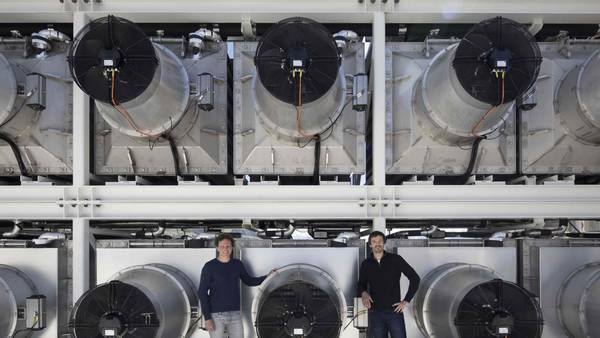
The world’s first “negative emissions” plant has begun operation—turning carbon dioxide into stone
"There’s a colorless, odorless, and largely benign gas that humanity just can’t get enough of. We produce 40 trillion kg of carbon dioxide each year, and we’re on track to cross a crucial emissions threshold that will cause global temperature rise to pass the dangerous 2°C limit set by the Paris climate agreement. But, in hushed tones, climate scientists are already talking about a technology that could pull us back from the brink. It’s called direct-air capture, and it consists of machines that work like a tree does, sucking carbon dioxide (CO2) out from the air, but on steroids—capturing thousands of times more carbon in the same amount of time, and, hopefully, ensuring we don’t suffer climate catastrophe. There are at least two reasons that, to date, conversations about direct air capture have been muted. First, climate scientists have hoped global carbon emissions would come under control, and we wouldn’t need direct air capture." [...]

Western Digital Unveils Next-generation Technology To Preserve And Access The Next Decade Of Big Data
"Company Builds on its Leadership of Delivering Industry’s Highest Capacity Hard Drives with Demonstration of Breakthrough Innovation on Microwave-Assisted Magnetic Recording Technology At its “Innovating to Fuel the Next Decade of Big Data” event today, Western Digital Corp. (NASDAQ: WDC) announced a breakthrough innovation for delivering ultra-high capacity hard disk drives (HDDs) to meet the future demands of Big Data with proven data center-level reliability. The event, held at the company’s headquarters in Silicon Valley, included a demonstration of the world’s first microwave-assisted magnetic recording (MAMR) HDD and presentations from company executives and the inventor of MAMR technology, Professor Jimmy Zhu from Carnegie Mellon University. The company also showcased advancements in micro actuation and Damascene recording head technology. Western Digital expects to begin shipping ultra-high capacity MAMR HDDs in 2019 for use in data centers that support Big Data applications across a full range of industries. “As the volume, velocity, variety, value and longevity of both Big Data and Fast Data grow, a new generation of storage technologies are needed to not only support ever-expanding capacities, but ultimately help our customers analyze and garner insights into our increasingly connected universe of data,” said Mike Cordano, president and chief operating officer at Western Digital. “Our ground-breaking advancement in MAMR technology will enable Western Digital to address the future of high capacity storage by redefining the density potential of HDDs and introduce a new class of highly reliable, ‘ultra-high capacity’ drives." [...]

In historic observation, astronomers detect colliding neutron stars for the first time
" An international research collaboration, including four Northwestern University astronomers, is the first to detect the spectacular collision of two neutron stars using both gravitational waves and light. The discovery ushers in an exciting new era in astronomy — multi-messenger astronomy with gravitational waves — less than two years after the first detection of gravitational waves opened a new window onto the universe. Northwestern’s Vicky Kalogera, the leading astrophysicist in the LIGO Scientific Collaboration (LSC), was one of six experts on a special panel at the National Science Foundation press conference announcing the news at the National Press Club in Washington, D.C. Gravitational waves were directly detected for the first time Sept. 14, 2015, by the Laser Interferometer Gravitational-Wave Observatory (LIGO), confirming Einstein’s theory of general relativity. Following the discovery, the observatory’s architects were awarded the 2017 Nobel Prize in Physics. The historic discovery of colliding neutron stars — which happened the morning of Aug. 17 with the longest gravitational-wave signal detected to date and a short gamma ray burst signal — was made by thousands of scientists and engineers using the U.S.-based LIGO; the Europe-based Virgo gravitational wave detector; and some 70 ground- and space-based observatories, including NASA’s Hubble Space Telescope. Multimedia gallery: Explore Northwestern’s involvement in the discovery The neutron stars’ spiral death dance in a nearby galaxy, 130 million light-years from Earth, ended with an extremely violent and bright collision — powerful enough to forge gold, platinum, lead and other heavy elements." [...]

Ubuntu 17.10 releases with GNOME, Kubernetes 1.8 & minimal base images
"Canonical today announced the release of Ubuntu 17.10 featuring a new GNOME desktop on Wayland, and new versions of KDE, MATE and Budgie to suit a wide range of tastes. On the cloud, 17.10 brings Kubernetes 1.8 for hyper-elastic container operations, and minimal base images for containers. This is the 27th release of Ubuntu, the world’s most widely used Linux, and forms the baseline for features in the upcoming Long Term Support enterprise-class release in April 2018. “Ubuntu 17.10 is a milestone in our mission to enable developers across the cloud and the Internet of Things” said Mark Shuttleworth, CEO and Founder of Canonical. “With the latest capabilities in Linux, it provides a preview of the next major LTS and a new generation of operations for AI, container-based applications and edge computing.” Enhanced security and productivity for developers The Atom editor and Microsoft Visual Studio Code are emerging as the new wave of popular development tools, and both are available across all supported releases of Ubuntu including 16.04 LTS and 17.10. The new default desktop features the latest version of GNOME with extensions developed in collaboration with the GNOME Shell team to provide a familiar experience to long-standing Ubuntu users." [...]
Outras Notícias
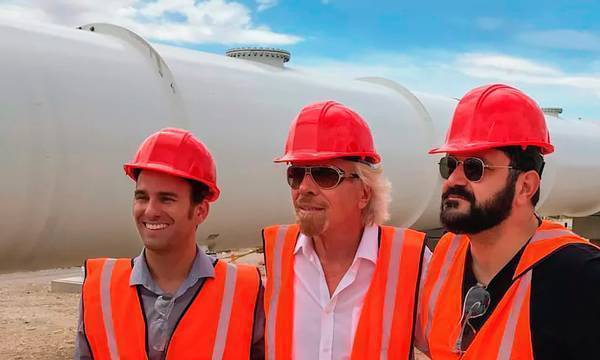
Richard Branson’s Virgin Group invests in Hyperloop One
"The British entrepreneur says he wants to make ‘airline speeds on the ground’ a reality, while engineering experts cast doubt on the safety of the technology Sir Richard Branson’s Virgin Group has invested an undisclosed amount in Hyperloop One, the frontrunner of a number of companies competing to bring Elon Musk’s futuristic vision of a magnetically-propelled high-speed transport system to life. The investment, which makes up part of an $85m fundraising announced in September, will see Hyperloop One changing adding the Virgin name to its branding. “This is an incredibly innovative and exciting new way to move people and things at airline speeds on the ground,” Branson said in a statement. “With Virgin Hyperloop One, passengers and cargo will be loaded into a pod, and accelerate gradually via electric propulsion through a low-pressure tube. The pod quickly lifts above the track using magnetic levitation and glides at airline speeds for long distances due to ultra-low aerodynamic drag. We’re incredibly excited about the technology behind Virgin Hyperloop One and the way it could transform passengers’ lives.” Josh Giegel, co-founder of Hyperloop One, said “the combination of our proven technology and Virgin’s expertise in transportation, operations, safety and passenger experience will accelerate the commercialisation phase of our company’s development." [...]

Tiangong-1: Chinese space station will crash to Earth within months
"Pieces weighing up to 100kg could make it to the surface, says expert, when out-of-control 8.5-tonne laboratory breaks apart in the atmosphere An 8.5-tonne Chinese space station has accelerated its out-of-control descent towards Earth and is expected to crash to the surface within a few months. The Tiangong-1 or “Heavenly Palace” lab was launched in 2011 and described as a “potent political symbol” of China, part of an ambitious scientific push to turn China into a space superpower. It was used for both manned and unmanned missions and visited by China’s first female astronaut, Liu Yang, in 2012. But in 2016, after months of speculation, Chinese officials confirmed they had lost control of the space station and it would crash to Earth in 2017 or 2018. China’s space agency has since notified the UN that it expects Tiangong-1 to come down between October 2017 and April 2018. Since then the station’s orbit has been steadily decaying." [...]

Spike Aerospace’s Supersonic Design Being Validated in Test Flights
"Early Saturday morning Oct 07, 2017, Spike Aerospace successfully test flew the subsonic subscale SX-1.2 demonstrator aircraft for the first time. The jet is an early unmanned prototype of the company’s 18 passenger S-512 Quiet Supersonic Jet. The SX-1.2 test flights proved that the aerodynamic design of the aircraft is valid and provided a tremendous amount of data regarding the flight characteristics of the aircraft. In total, seven short flights were performed to test the design and flight controls of the jet. Between each test flight, adjustments were made to the aircraft’s center of mass, balance and control surfaces. Additional performance data was observed and collected." [...]
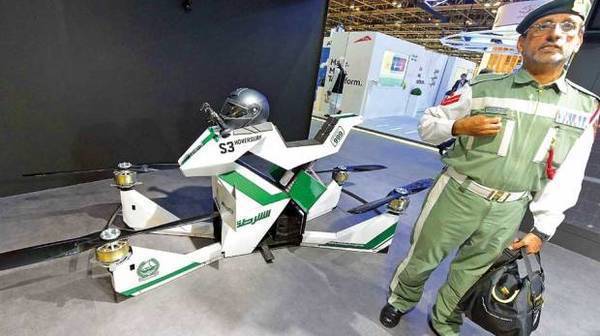
Dubai Police unveil flying bike, robotic vehicles
"Dubai: In an impressive display of advanced technology at their disposal, Dubai Police on Sunday revealed a robo cop, an auto police patrol, and a flying motorbike at Gitex. The new flying bike ‘Hoversurf’ can be used for responding to emergency situations. “It works on electricity and can fly at five metres height and carry a policeman during emergency situations and heavy traffic. The bike can also fly without a passenger and and can go up to 6 kilometres. It can fly for 25 minutes and can carry up to 300 kg of weight at a speed of 70km/h,” First Sergeant Ali Ahmad Mohammad from the VIP Security Department in Dubai Police told Gulf News. Dubai Police also unveiled a smart motorbike with multiple cameras capable of spotting reckless drivers." [...]

Snow removal on airfields: Automated Mercedes-Benz Arocs trucks clear the way
"In an unprecedented test, Daimler AG is demonstrating another potential solution for the future use of automated commercial vehicles. Following the successful demonstration of the innovative Highway Pilot and Highway Pilot Connect systems, the latter making truck platooning possible, the company today presents another development step forward on the road to the fully connected and autonomous commercial vehicle. On the site of the former Pferdsfeld airbase, the world's leading manufacturer of commercial vehicles demonstrates the practical application of automated snow removal operations at airports based on a specific customer requirement. Martin Daum, the Daimler AG Board of Management member responsible for Daimler Trucks, emphasises: "We are not just talking about new technologies, we are bringing them onto the road. Step by step we are developing our very latest assistance systems even further – with a view to automated driving. We are currently working on the implementation of two specific use cases: Firstly automated driving in quite normal traffic on motorways – with the clear aim of relieving driver workload and significantly improving safety." [...]

Testing in the Australian skies
"Project Wing is collaborating with communities and partners in southeastern Australia to trial our delivery drones Over the past few years, Project Wing has conducted thousands of flights to get our drone delivery technology ready for everyday use. In early 2016, we successfully completed our first drone deliveries to members of the public in an open field at Virginia Tech University. This fall we’ve been testing in a rural community on the border of the ACT and NSW and tackling an entirely different level of operational complexity: making deliveries directly to people’s yards. Our testers — alpaca farmers, math professors, equestrians, and artists (not to mention a few curious kangaroos) — have been helping us fine-tune how our drones move goods from where they’re located to where they’re needed. And today we’re announcing that two Australian merchants are joining our tests, as they’re eager to understand how drone delivery could help them serve their customers better. Guzman y Gomez, a Mexican food chain, and Chemist Warehouse, a chain of pharmacies, will receive orders from our testers who’ve purchased items using the Project Wing app on their smartphones." [...]
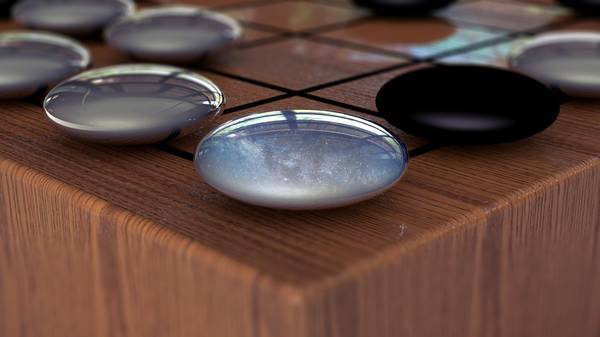
AlphaGo Zero: Learning from scratch
"Artificial intelligence research has made rapid progress in a wide variety of domains from speech recognition and image classification to genomics and drug discovery. In many cases, these are specialist systems that leverage enormous amounts of human expertise and data. However, for some problems this human knowledge may be too expensive, too unreliable or simply unavailable. As a result, a long-standing ambition of AI research is to bypass this step, creating algorithms that achieve superhuman performance in the most challenging domains with no human input. In our most recent paper, published in the journal Nature, we demonstrate a significant step towards this goal. The paper introduces AlphaGo Zero, the latest evolution of AlphaGo, the first computer program to defeat a world champion at the ancient Chinese game of Go." [...]

NASA Missions Catch First Light from a Gravitational-Wave Event
"For the first time, NASA scientists have detected light tied to a gravitational-wave event, thanks to two merging neutron stars in the galaxy NGC 4993, located about 130 million light-years from Earth in the constellation Hydra. Shortly after 8:41 a.m. EDT on Aug. 17, NASA's Fermi Gamma-ray Space Telescope picked up a pulse of high-energy light from a powerful explosion, which was immediately reported to astronomers around the globe as a short gamma-ray burst. The scientists at the National Science Foundation’s Laser Interferometer Gravitational-wave Observatory (LIGO) detected gravitational waves dubbed GW170817 from a pair of smashing stars tied to the gamma-ray burst, encouraging astronomers to look for the aftermath of the explosion. Shortly thereafter, the burst was detected as part of a follow-up analysis by ESA’s (European Space Agency’s) INTEGRAL satellite. NASA's Swift, Hubble, Chandra and Spitzer missions, along with dozens of ground-based observatories, including the NASA-funded Pan-STARRS survey, later captured the fading glow of the blast's expanding debris. "This is extremely exciting science," said Paul Hertz, director of NASA’s Astrophysics Division at the agency’s headquarters in Washington." [...]
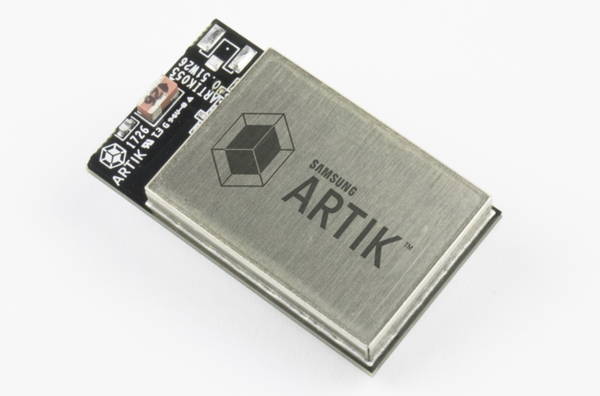
Samsung Introduces New ARTIK™ Secure IoT Modules and Security Services to Deliver Comprehensive Device-to-Cloud Protection for IoT
"Samsung Electronics today announced ARTIK™ secure “s” systems-on-modules and services for the ARTIK™ IoT Platform to strengthen edge security. Samsung ARTIK™ IoT platform now delivers device-to-cloud security for companies to build, develop and manage secure, interoperable, and intelligent IoT products and services for everything from smart homes to high-tech factories. In addition, Samsung announced that the ARTIK™ IoT platform will fully integrate with the SmartThings Cloud — Samsung’s new unified IoT platform. This will enable interoperability with both Samsung and third-party IoT devices and IoT cloud services. The Samsung ARTIK™ IoT Platform with SmartThings Cloud will provide everything companies need to quickly develop secure IoT products and services including production-ready hardware, software and tools, cloud services and a growing partner ecosystem. The addition of new ARTIK™ secure IoT modules enables device-level protection for safe data exchange, interoperability, and secure access to ARTIK™ IoT services including device onboarding, orchestration, management, and over-the-air updates." [...]
Ciência e Tecnologia

Biodegradable electronics
"Under the direction of the Fraunhofer Institute for Organic Electronics, Electron Beam and Plasma Technology FEP, an in-house Fraunhofer project for development of biodegradable electronics was begun last year. The Fraunhofer Institute for Electronic Nano Systems ENAS, the Fraunhofer Institute for Biomedical Engineering IBMT, the Fraunhofer Institute for Silicate Research ISC, and the Fraunhofer Resource Recycling and Strategy Project Group IWKS are working together on the project. The first results of the Fraunhofer FEP will be presented during Semicon Europe 2017 as part of productronica 2017 in Munich at the Silicon-Saxony joint booth in Hall B, Booth Nr. B1-416, November 14-17, 2017. Electronic components that are completely broken down in a biological environment after a pre-defined operating life open up novel applications as well as ways for reducing their ecological footprint. One enabling technology for such components is the manufacture of biodegradable conductive traces on biodegradable substrates using vacuum technologies." [...]
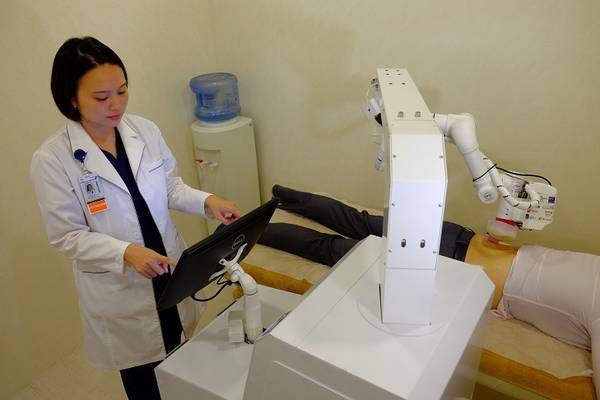
Singapore’s first robot masseuse EMMA starts work
"Made in NTU, the robot has the potential to address manpower shortage and lower treatment costs The next time you visit a Traditional Chinese Medicine (TCM) clinic for a stiff back, don’t be surprised if Emma the robot is your masseuse. Short for Expert Manipulative Massage Automation, Emma is developed by AiTreat, a start-up incubated by Nanyang Technological University, Singapore (NTU Singapore). Emma has a highly articulated arm with soft massage tips that mimic the human palm and thumb that replicate the traditional acupoint massage known as “tuina”. Specialising in back and knee massages, Emma started work today at NovaHealth TCM clinic, working hand-in-hand with her human colleagues, a physician and a massage therapist. The official launch of Emma and the NovaHealth clinic today was attended by fellow entrepreneurs and industry leaders, including Mr Inderjit Singh, Chairman of NTUitive, NTU’s innovation and enterprise arm, and a member of NTU Board of Trustees. Founder of AiTreat and NovaHealth, Mr Albert Zhang, who led the development of Emma, said Emma will address the manpower shortage and issues of consistency of quality in treatments faced in the healthcare industry." [...]
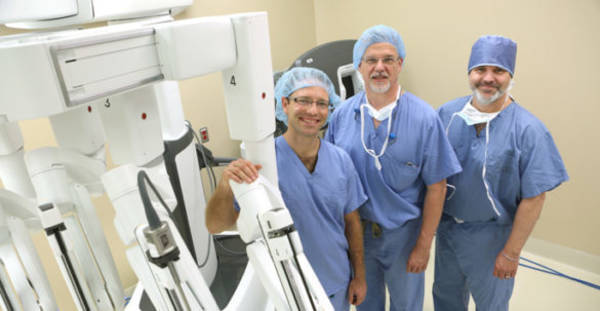
Team developing imaging upgrade for robotic surgery
"Removing part of a kidney with minimally invasive robotic surgery rather than an entire kidney when operating for smaller tumors is often best for patients from a recovery and health standpoint, but many surgeons hesitate to do so because of the complexity of the robotic partial nephrectomy procedure. Investigators with the Vanderbilt Institute for Surgery and Engineering (VISE) hope to change that by developing an image guidance interface for robotic surgery systems. This will give doctors a three-dimensional map of subsurface tumors, delicate blood vessels and other structures before they make incisions, so that they can cut in exactly the right place. A Vanderbilt team led by a urologic surgeon and biomedical and mechanical engineers has received a four-year National Institutes of Health (NIH) grant to develop enhanced software that will create a “surgical GPS” system to provide intraoperative guidance to surgeons performing partial kidney removal with the da Vinci robotic surgery system. “It’s our goal to make minimally invasive partial nephrectomy the gold standard for how patients with appropriate kidney masses are cared for surgically, as clinical evidence shows it should be,” said S. Duke Herrell, M.D., professor of Urologic Surgery, Biomedical and Mechanical Engineering, and director of Minimally Invasive Urologic Surgery and Robotics. “This innovation has the potential to dramatically enhance long-term outcomes and quality of life for patients by preserving kidney function and saving lives by more accurately removing masses and reducing positive tumor margin rates.” According to National Cancer Institute statistics, an estimated 64,000 new kidney cancer cases will be diagnosed and more than 14,000 deaths will occur in the United States in 2017." [...]
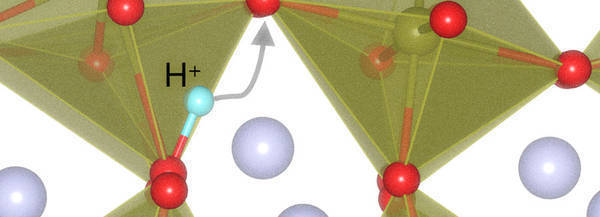
Forget about it
"Even as the power of our modern computers grows exponentially, biological systems — like our brains — remain the ultimate learning machines. By finding materials that act in ways similar to the mechanisms that biology uses to retain and process information, scientists hope to find clues to help us build smarter computers. Inspired by human forgetfulness — how our brains discard unnecessary data to make room for new information — scientists at the U.S. Department of Energy’s (DOE) Argonne National Laboratory, in collaboration with Brookhaven National Laboratory and three universities, conducted a recent study that combined supercomputer simulation and X-ray characterization of a material that gradually “forgets.” This could one day be used for advanced bio-inspired computing. “It’s hard to create a non-living material that shows a pattern resembling a kind of forgetfulness, but the specific material we were working with can actually mimic that kind of behavior.” - Subramanian Sankaranarayanan, Argonne nanoscientist and study author. “The brain has limited capacity, and it can only function efficiently because it is able to forget,” said Subramanian Sankaranarayanan, an Argonne nanoscientist and study author. “It’s hard to create a non-living material that shows a pattern resembling a kind of forgetfulness, but the specific material we were working with can actually mimic that kind of behavior.” The material, called a quantum perovskite, offers researchers a simpler non-biological model of what “forgetfulness” might look like on an electronic level." [...]
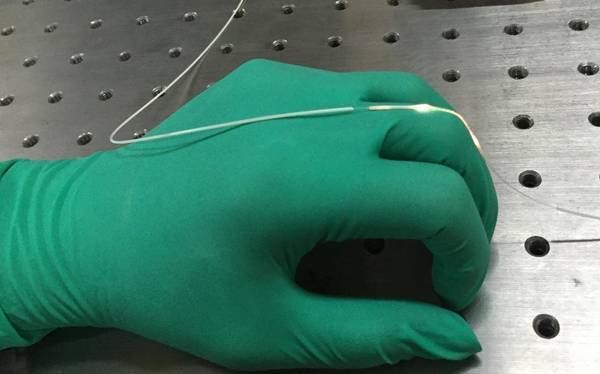
In a first for wearable optics, researchers develop stretchy fiber to capture body motion
"The exciting applications of wearable sensors have sparked a tremendous amount of research and business investment in recent years. Sensors attached to the body or integrated into clothing could allow athletes and physical therapists to monitor their progress, provide a more detailed level of motion capture for computer games or animation, help engineers build robots with a lighter touch or form the basis for new types of real-time health monitors. In Optica, The Optical Society’s journal for high impact research, a team led by Changxi Yang of the State Key Laboratory of Precision Measurement Technology and Instruments at Tsinghua University in Beijing offers the first demonstration of optical fibers sturdy enough to sense a wide range of human motion. . The new fiber is sensitive and flexible enough that it can detect joint movements, unlike currently used fiber sensors. “This new technique provides a fiber-optic approach for measuring extremely large deformations,” said Yang." [...]

NUS researchers develop 4-in-1 smart utilities plant custom-made for tropical climate
"The eco-friendly system harvests waste energy and is suitable for building clusters and underground cities A research breakthrough achieved by a team led by Associate Professor Ernest Chua from the Department of Mechanical Engineering at National University of Singapore (NUS) Faculty of Engineering could pave the way for a more environmentally friendly and cost-effective way of producing key essentials for daily living – electricity, water, air-conditioning and heat. This novel system is suitable for housing and building clusters, as well as underground cities, especially those in the tropics. The unique smart quad-generation plant produces all four key utilities simultaneously using a single, integrated system. Energy efficiency is optimised by maximising the recovery of waste energy that is generated. Specially designed for use in tropical countries, the plant offers greater energy and cost savings, and it is also more space efficient. In addition, this novel system can significantly reduce carbon dioxide emission by more than 30 per cent while meeting the various needs of electricity, water, cooling and heating." [...]
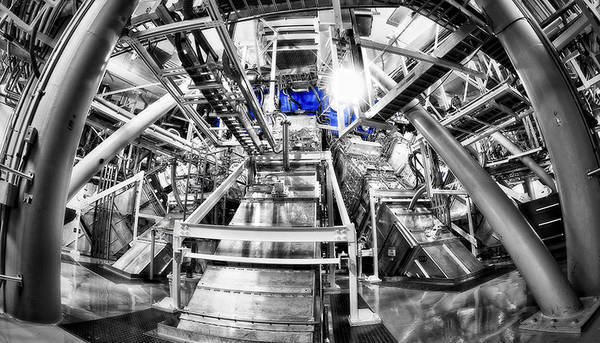
Plasma optic combines lasers into superbeam
"Since its introduction in the 1977 film "Star Wars," the Death Star has remained one of science fiction's most iconic figures. The image of Alderaan's destruction at the hands of the Death Star's superlaser is burned into the memory of millions of fans. Scientists and laser experts have maintained that this superbeam could never work due to the properties of lasers -- theory says that rather than converging and combining their energy, the beams would just pass through one another. That was true -- until now. A team of researchers at Lawrence Livermore National Laboratory (LLNL) have added a plasma -- a charged mixture of ions and free electrons -- to the concept and successfully combined several separate lasers into a superbeam. This work was recently published in Nature Physics (link is external), and is a next step in LLNL's 50-year history of leadership in laser research and development." [...]

Bridging the terahertz gap
"Optical frequency comb offers a convenient way to generate elusive terahertz frequencies Optical frequency combs are widely-used, high-precision tools for measuring and detecting different frequencies — a.k.a. colors — of light. Unlike conventional lasers, which emit a single frequency, these lasers emit multiple frequencies simultaneously. The equally spaced frequencies resemble the teeth of a comb. Optical frequency combs are used for everything from measuring the fingerprints of specific molecules to detecting distant exoplanets. Now, researchers at the Harvard John A. Paulson School of Engineering and Applied Sciences (SEAS) are exploring the possibility of using an infrared frequency comb to generate elusive terahertz frequencies." [...]
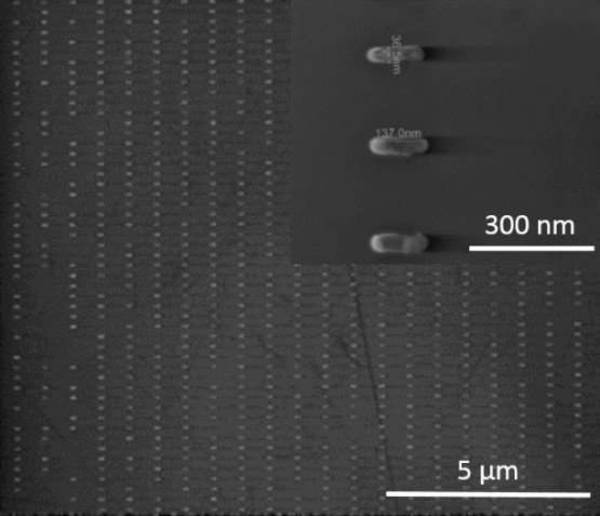
Nanoantenna arrays power a new generation of fluorescence-based sensors
"Researchers from the Universities of Bristol and Bedfordshire, in collaboration with multinational company ABB, have designed and tested a series of plasmonic nanoantenna arrays that could lead to the development of a new generation of ultrasensitive and low-cost fluorescence sensors that could be used to monitor water quality. The arrays, designed and tested by Dr Neciah Dorh during his PhD at the University of Bristol, are made from aluminium nanorods fabricated using electron beam lithography by commercial partner Kelvin Nanotechnologies. The nanorods, 50nm wide and 158nm long, are designed to resonantly enhance fluorescence emission from a range of contaminants in water such as diesel or tryptophan. The work, published in Applied Optics, shows a six-fold increase in measured fluorescence emission from a dye. The research also shows that by correctly designing the array element spacing, strongly directional fluorescent emission can be obtained which would allow for highly integrated multi-wavelength sensors to be designed. The work was carried out in Professor Martin Cryan's research group, which is part of the Photonics Research group in the Department of Electrical and Electronic Engineering." [...]
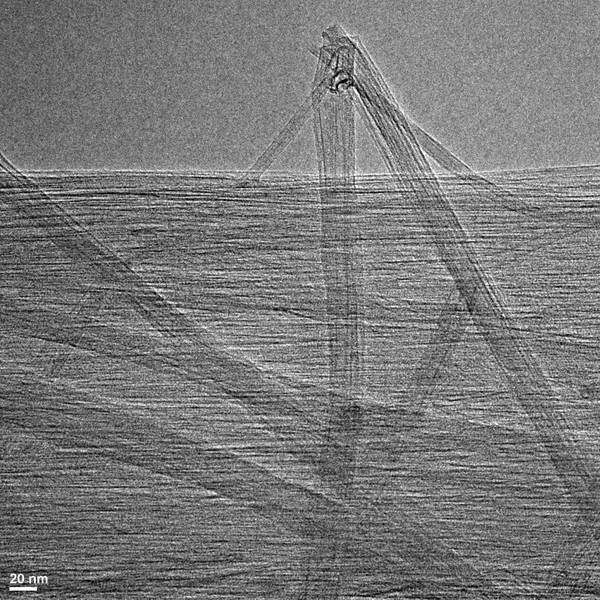
Long nanotubes make strong fibers
"Rice University researchers advance characterization, purification of nanotube wires and films To make continuous, strong and conductive carbon nanotube fibers, it’s best to start with long nanotubes, according to scientists at Rice University. The Rice lab of chemist and chemical engineer Matteo Pasquali, which demonstrated its pioneering method to spin carbon nanotube into fibers in 2013, has advanced the art of making nanotube-based materials with two new papers in the American Chemical Society’s ACS Applied Materials and Interfaces. The first paper characterized 19 batches of nanotubes produced by as many manufacturers to determine which nanotube characteristics yield the most conductive and strongest fibers for use in large-scale aerospace, consumer electronics and textile applications. Iron impurities are easy to see in a bundle of carbon nanotubes viewed through a transmission electron microscope. Researchers at Rice University and the National University of Singapore are leading the charge to purify nanotubes for use in continuous, strong and conductive carbon nanotube fibers. Long Description Iron impurities are easy to see in a bundle of carbon nanotubes viewed through a transmission electron microscope." [...]
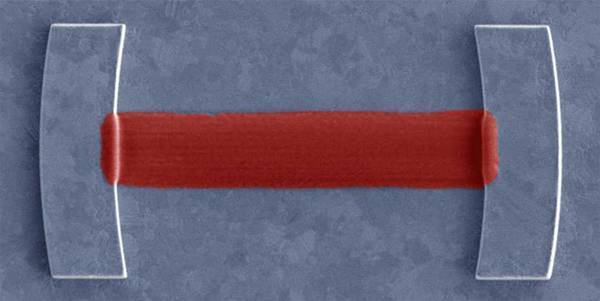
A miniature laser-like device for surface plasmons
"Researchers at ETH Zurich have developed a miniature device capable of producing laser-like beams of a particular kind of electromagnetic wave called a surface plasmon. Surface plasmons can be focused much more tightly than light waves, making them useful for applications such as sensing. When light is confined between two partially reflecting mirrors and amplified by some material in between them, the resulting beam can be extremely bright and of a single colour. This is the working principle of the laser, a tool used in all areas of modern life from the DVD player to the operating theatre. Researchers at ETH Zurich led by David Norris, professor at the Optical Materials Engineering Laboratory, and Prof. Dimos Poulikakos, professor at the Laboratory of Thermodynamics in Emerging Technologies, have developed a miniature device that applies the same principle to so-called surface plasmons. The electromagnetic waves created by such a surface plasmon laser, or “spaser”, can be focused much more tightly than light, which makes them interesting both for fundamental research and for technical applications such as sensing." [...]

This nanoelectronics breakthrough could lead to more efficient quantum devices
"A Concordia study, published in Nature Communications, reveals the potential for even smarter transistors Researchers from Concordia have made a breakthrough that could help your electronic devices get even smarter. Their findings, which examine electron behaviour within nanoelectronics, have been published in the journal Nature Communications. The article was co-authored by current PhD student Andrew McRae (MSc 13) and Alexandre Champagne, associate professor of physics in the Faculty of Arts and Science, along with two Concordia alumni, James M. Porter (MSc 15, BSc 11) and Vahid Tayari (PhD 14). Champagne is pleased with the reception the research has garnered. “We were thrilled when our paper was accepted by Nature Communications because of the respect the journal has in the field,” he says. Champagne, the study’s principle investigator, is also chair of Concordia’s Department of Physics and the Concordia University Research Chair in Nanoelectronics and Quantum Materials." [...]
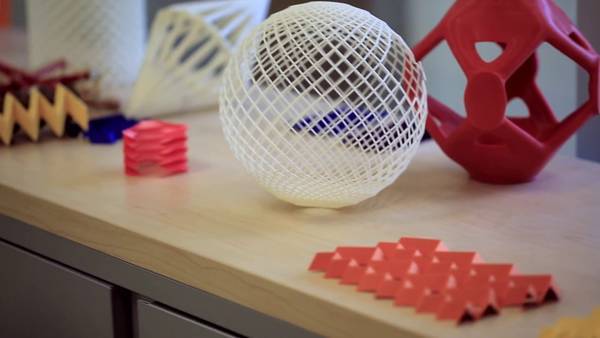
New Software Speeds Origami Structure Designs
"Researchers at Georgia Institute of Technology have developed a new computer-aided approach that streamlines the design process for origami-based structures, making it easier for engineers and scientists to conceptualize new ideas graphically while simultaneously generating the underlying mathematical data needed to build the structure in the real world. Origami paper folding techniques in recent years have been at center of research efforts focused on finding practical engineering applications for the ancient art, with ideas ranging from deployable antennas to robotic arms. “Our work provides a means to predict computationally the real origami behavior of a design – something that up to now has not been easily done,” said Glaucio Paulino, a professor in the Georgia Tech School of Civil and Environmental Engineering. “With the new software, we can easily visualize and, most importantly, engineer the behavior of deployable, self-assembling, and adaptable origami systems.” The research, which was supported by the National Science Foundation and reported October 11th in the journal Proceedings of the Royal Society A, involved building a computer model to simulate the interaction between the two facets of a folded sheet, including how easily and how far the folds would bend and how much the flat planes would deform during movement. Once all sections were connected together and digitally represented a piece of origami, the model could simulate how the structure would behave based on what type of material – from soft paper to hard plastic or metal – would be used to create the object. “This type of modeling was possible already using finite element analysis, but that is a time-consuming process that could take hours or days and provides a lot of unnecessary data,” said Ke Liu, a Georgia Tech graduate student who worked on the project." [...]
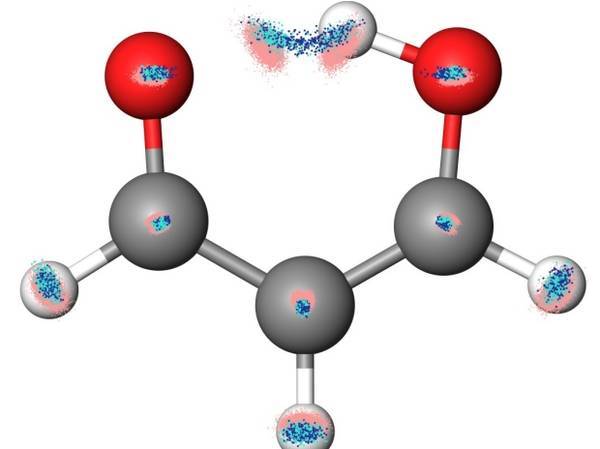
Scientists Develop Machine-Learning Method to Predict the Behavior of Molecules
"An international, interdisciplinary research team of scientists has come up with a machine-learning method that predicts molecular behavior--a breakthrough that can aid in the development of pharmaceuticals. An international, interdisciplinary research team of scientists has come up with a machine-learning method that predicts molecular behavior, a breakthrough that can aid in the development of pharmaceuticals and the design of new molecules that can be used to enhance the performance of emerging battery technologies, solar cells, and digital displays. The work appears in the journal Nature Communications. “By identifying patterns in molecular behavior, the learning algorithm or ‘machine’ we created builds a knowledge base about atomic interactions within a molecule and then draws on that information to predict new phenomena,” explains New York University’s Mark Tuckerman, a professor of chemistry and mathematics and one of the paper’s primary authors. The paper’s other primary authors were Klaus-Robert Müller of Berlin’s Technische Universität (TUB) and the University of California Irvine’s Kieron Burke. The work combines innovations in machine learning with physics and chemistry." [...]
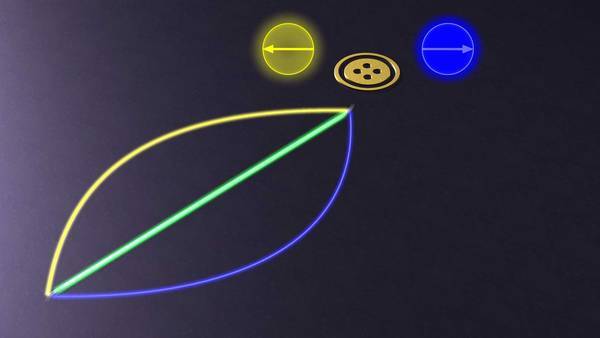
Quantum Simulator: First Functioning Component
"Superconducting Quantum Simulator Outperforms Conventional Computer and May Simulate Complex Biological Processes, such as Plant Metabolism Hurricanes, traffic jams, demographic development – to predict the effect of such events, computer simulations are required. Many processes in nature, however, are so complicated that conventional computers fail. Quantum simulators may solve this problem. One of the basic phenomena in nature is the interaction between light and matter in photosynthesis. Physicists of Karlsruhe Institute of Technology (KIT) have now made a big step towards quantum mechanics understanding of plant metabolism. This is reported in the Nature Communications journal." [...]
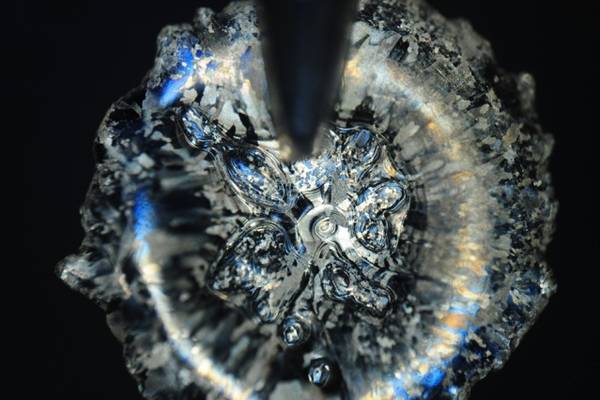
Stick, peel, or bounce: Controlling a freezing droplet’s fate
"When freezing droplets impact a surface, they generally either stick to it or bounce away. Controlling this response is crucial to many applications, including 3-D printing, the spraying of some surface coatings, and the prevention of ice formation on structures such as airplane wings, wind turbines, or power lines. Now, MIT researchers have found a surprising new twist to the mechanics involved when droplets come in contact with surfaces. While most research has focused on the hydrophobic properties of such surfaces, it turns out that their thermal properties are also crucially important — and provide an unexpected opportunity to “tune” those surfaces to meet the exact needs of a given application. The new results are presented today in the journal Nature Physics, in a report by MIT associate professor of mechanical engineering Kripa Varanasi, former postdoc Jolet de Ruiter, and postdoc Dan Soto. “We found something very interesting,” Varanasi explains." [...]
Modelos 3D
Com a disponibilidade de ferramentas que permitem dar azo a nossa imaginação na criação de peças 3D e espaços como o thingiverse para as publicar, esta rubrica apresenta alguns modelos selecionados que poderão ser úteis.
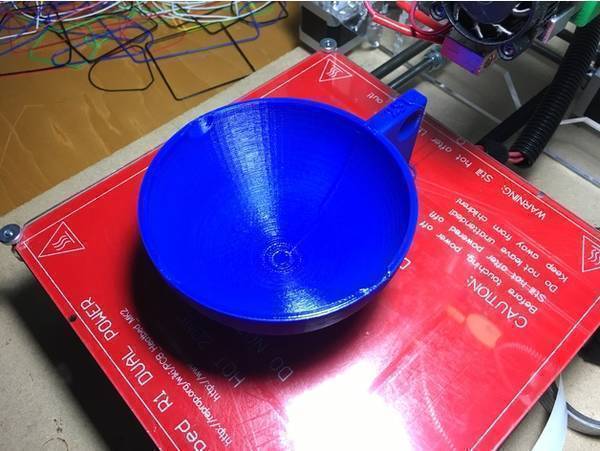
Customizable measuring cups (OpenSCAD)
"I need to make 2.5, 5, 10 and 15 tablespoon measurements regularly. Even the shortcuts to those measurements are tedious (e.g. 10T = 1/2C + 2T). I figured that my 3D printer and I ought to do something about that.Those specific measurement sizes probably aren't very useful to anyone but me, but I have included the OpenSCAD file, so if you need another size and aren't afraid to use OpenSCAD, go for it. Instructions for creating a measuring cups in this style of your own size are in "How I Designed This" below.In addition to being able to measure the intended volume accurately, a label has been added to the top of the handle to identify the measured amount. The label is also customizable in OpenSCAD.There are also small lip cutouts to prevent dribbling down the side of the cup when you pour and finger hole cutouts in the handles to make them easier to grip." [...]
Documentação
A documentação é parte essencial do processo de aprendizagem e a Internet além de artigos interessantes de explorar também tem alguma documentação em formato PDF interessante de ler. Todos os links aqui apresentados são para conteúdo disponibilizado livremente pelo editor do livro.
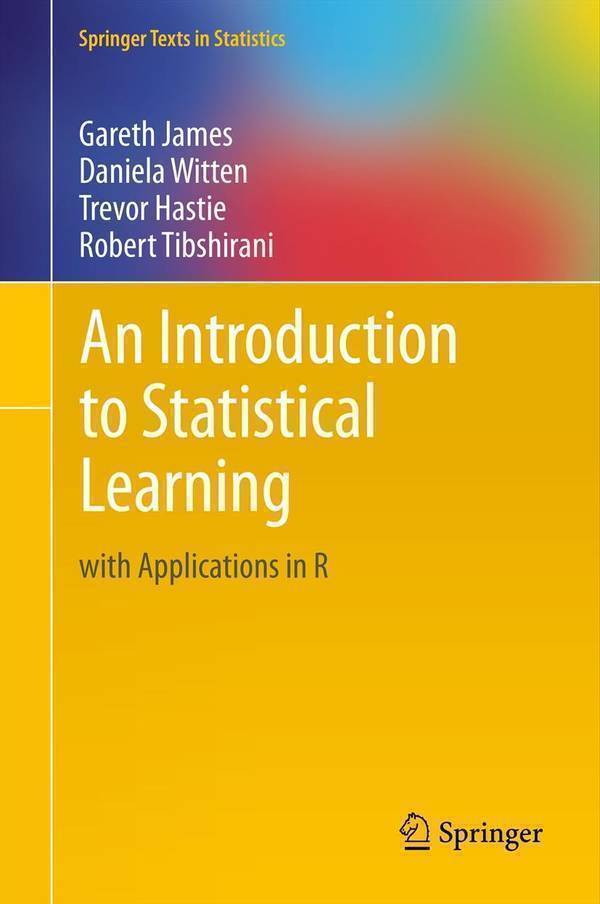
An Introduction to Statistical Learning with Applications in R
"This book provides an introduction to statistical learning methods. It is aimed for upper level undergraduate students, masters students and Ph.D. students in the non-mathematical sciences. The book also contains a number of R labs with detailed explanations on how to implement the various methods in real life settings, and should be a valuable resource for a practicing data scientist. " [...]
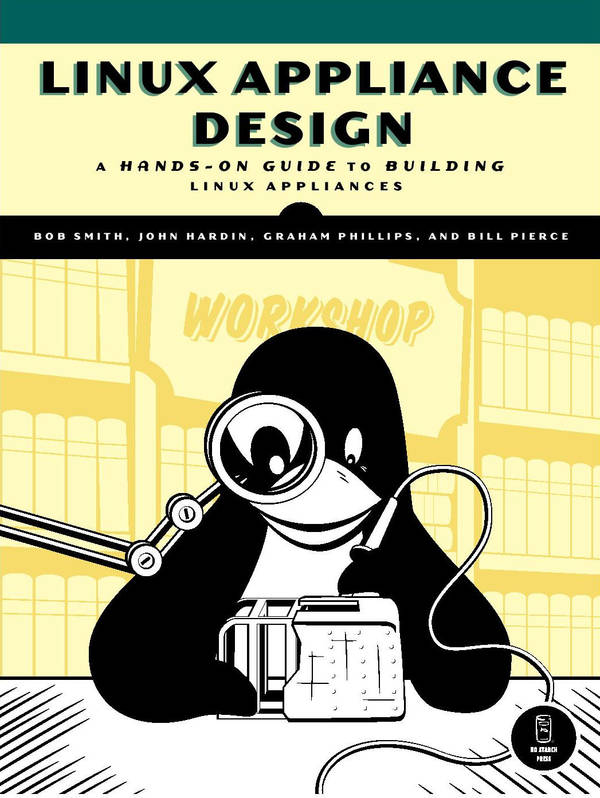
Linux Appliance Design
"Linux Appliance Design shows how to use librta to build a Linux appliance. Topics include appliance architecture, security, and how to build simple, yet responsive user interfaces. The book shows how to build five different user interfaces including a web interface, a command line interface, a front panel interface, an SNMP agent, and a framebuffer interface with an IR remote control. Readers are encouraged to use this appliance's source code when they build their own appliances. " [...]
Projetos Maker
Diversos Projetos interessantes.

Connect LinkIt 7688(Duo) to QNAP NAS via QIoT Suite Lite
"How to seamlessly connect your devices to QNAP NAS using QIoT Suite Lite Please ensure your LinkIt 7688 (duo) and NAS is under the same LAN. 1. Configure your device 1.1 Getting started What will you need 1. LinkIt 7688 (Duo) 2. Power Supply: The LinkIt 7688 is powered by a USB Micro power supply with at least 1A at 5V. 3." [...]
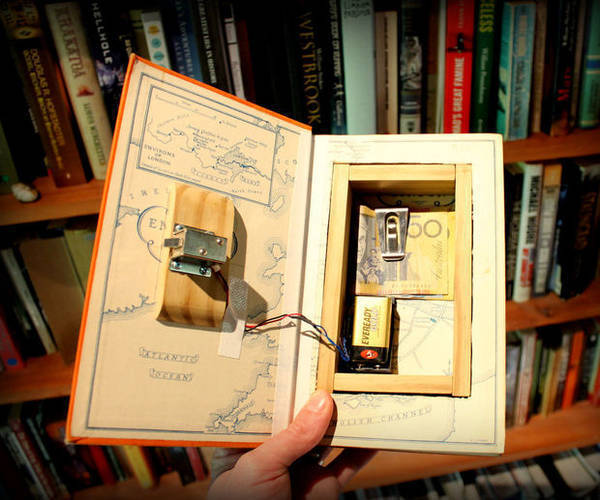
Book Safe With Hidden Magnet Lock
"Over the years Ive made a whole bunch of book safes. A couple of them I posted on Instructables and can be found here and here. To make the book safes that little more secure, I like to incorporate locks into them. Admittedly, the locks that I have designed in the past are simple and are easily located on the book. Plus, you need to take into consideration that a book after all is only paper, if you really wanted to get into it you could probably just rip it open! This time I wanted to disguise the lock so you wouldnt know that the book even had one." [...]

SimpleSumo- Educational Fighting Robots!
"One ringtwo robots enteronly one will be victorious! Mini-sumo robots are an excellent way to show kids that science and engineering can be fun and exciting! Designed with education in mind, I created the open source 'SimpleSumo' platform to lower the barrier to entry into the robot sport of mini-sumo. (A tame version of Battlebots.) These robots are easy enough to understand and build that kids can get started quickly, but they also offer great depth through Mr-potato-head-style mechanical customization and Arduino programming. This instructable will walk you through the assembly and programming process for a SimpleSumo robot kit." [...]

PICAXE - Programmable Automatic Plant Watering Device
"This project is based on a 20X2 PICAXE Microcontroller. It uses a programmable timing circuit to allow the user to program repeated automatic plant watering cycles by controlling a small electric pump that feeds the plant water with 1/4 " tubing. The water reservoir can be anything you like such as a plastic bottle or rain barrel. For this particular version you need 120VAC power, but you could conceivably convert this to battery or solar power. This is a prototype and could also be reduced in size considerably in future versions. The ideal use for this, and the reason I designed and built it, is to water plants in a plant pot to keep them alive for a few days while you are away on vacation or otherwise occupied." [...]
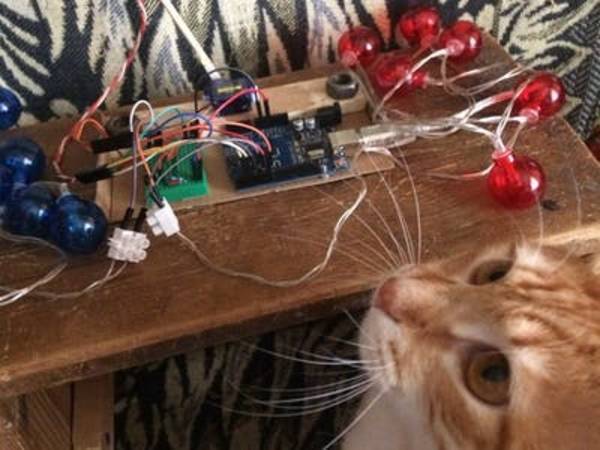
Remote Arduino Control with Telegram Bot
"Arduino is controlled via telegram bot. This project is being prepared for the New Year. Yes, I know that it is not coming soon. Every year before the New Year I make something on arduino with light bulbs and servos. This year I decided to make remote control of garlands through Telegram bot. I did not use public libraries, but wrote a minimal class (in Python) that can only receive and send text messages." [...]
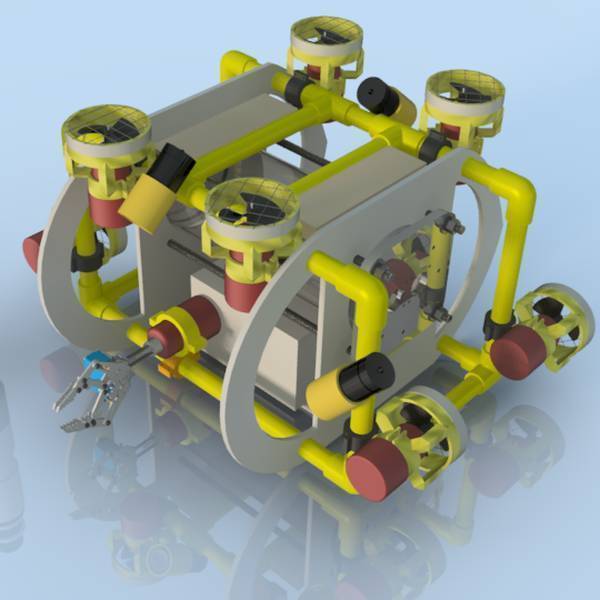
Archelon ROV
"The Archelon ROV is a low-cost, environmentally friendly Remotely Operated Vehicle (ROV) that helps to alleviate marine contamination. The Archelon ROV is a low-cost, environmentally friendly Remotely Operated Vehicle (ROV) that helps to alleviate marine contamination. AscendTech 4-H Robotics Club, a team of high school students, designed and manufactured Archelon, a remotely-operated vehicle (ROV) capable of streamlining commerce as well as benefiting the health and safety of the general public. Archelon features powerful, advanced image- processing software as well as a robust, modular, economical design. With innovative payload tools and operated by eight bilge pump motors, the Archelon ROV is perfect for operating in precarious conditions to address the issues on our sea ports and water fronts. Links https://github.com/AscendTech4H/AscendTechROV https://www.ascendtech4h.org https://sketchfab.com/models/6301f13787b343ce81dd5a0d121bbc7e Problem Statement Maritime trade is an integral part of the United States economy." [...]

Digital Clock With Mirrored Display Driven by Accelerometers
"This project is an original application of a digital clock with mirrored display and driven by Arduino and accelerometers. With this clock it is possible to place it in front of a mirror and the image of its display will be shown in the correct position, automatically canceling the mirroring effect !!! This principle is the same as that used in HUD (head-up display) for mirror surfaces or glass, such as on car windshields and aircrafts. Let's see how it works !! " [...]
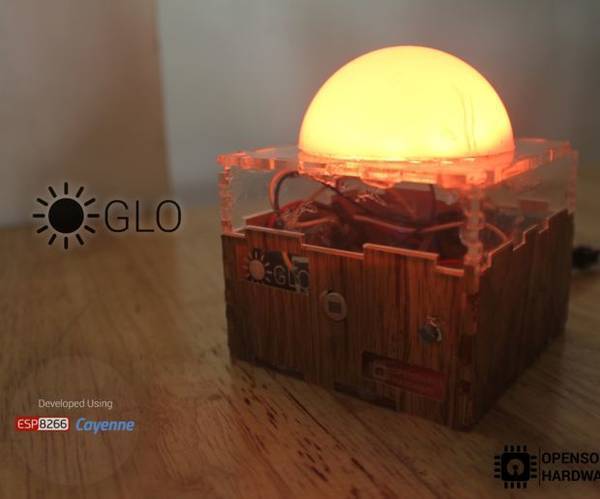
GLO: IoT Smart Light
"Too lazy to turn on/off your bedroom light while in the night? or Stuck in the middle of the night searching for your bedroom light switches? Maybe you should try building GLO! GLO: IoT Smart Light! Here Comes The Story of How GLO Born I am such a lazy person, who usually forgets to turn off my room light all the time when I am leaving the room. The light switches are little far away from my bed so it is a little bit hard to turn on /off my room light when I am in the bed, especially in the middle of nights." [...]

3D Printed 18DOF Hexapod
"Hi In this instructable, I will show you how I made this hexapod robot.When I was designing it my main goal was to make it small,3d printable, and it needed to look good on top of that.At this moment it is controlled with a PS2 controller but it has more than enough capabilities to be reworked to work autonomously. Hexapod has all his electronics enclosed in his body and batteries are hidden with lids. So I wanted to hide as much of wires as I could to give it more organic look. It needs a lot of parts to make it, and with his size, a lot of that is squeezed inside or needs some rework, but with a lot of time and patience you can build it. ;) Some data for this build will be on my GitHub so I will link it here. " [...]

SEB the Arduino Guide Bot
"Hello everyone! Today we'll be building a seeing eye robot aka SEB. SEB is used for leading visually impaired people. SEB can be used as a replacement for guide dogs, for it is less expensive and requires less care to run SEB. I have been working on SEB for about 2 and a half years now, and I'm finally ready to share my experience. I taught myself how to solder, breadboard, and program on Arduino sketch with this project, when I started I was 11 years old and only had experience with Lego Mind-storms, I say that to say, that anyone can build SEB as long as you have to focus and motivation." [...]
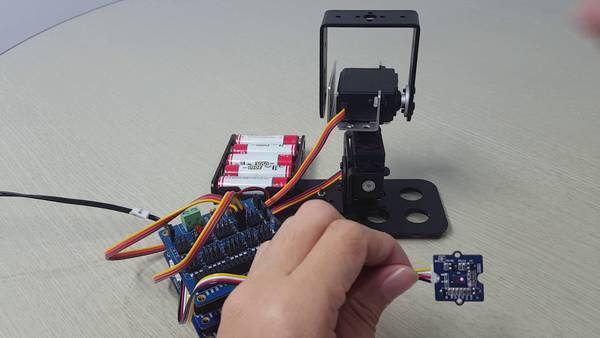
PHPoC - Control Pan-Tilt via Hand Gesture
"In this project, I am going show you how to use PHPoC to control Pan-Tilt via hand gesture. Through this way, controlling robot really becomes more fun! " [...]
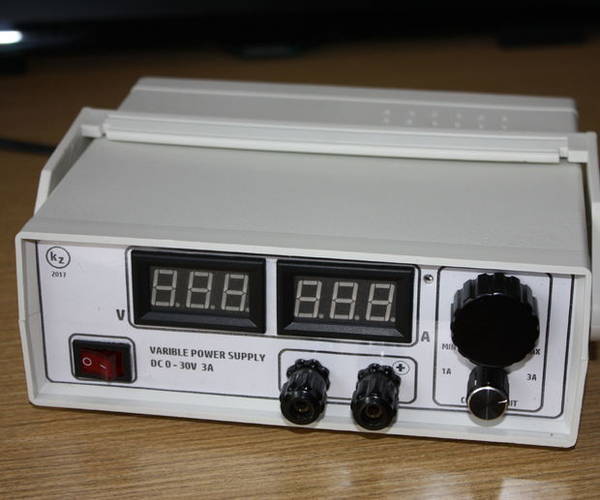
Small Variable Power Supply
"There are plenty of power supplies available on the Instructables. Compared to the others, this one is: Small size and compact Powerful Simple, made of modules and parts ready to use No special tools necessary Parameters are following: Input voltage AC 230V (or 110V - transformer dependant) Output voltage DC 0 to 30V, adjustable by precision 10 turn potentiometer Output current max DC 3A Current limit adjustable roughly from 0.1 to 3A with LED indication Digital panel meters for voltage and current measurement Dimensions 20cm x 17.6cm x 7cm I have made some power supplies for my electronic bench in the past. Their parameters are lower than 20V and 1A, so new one is big improvement. As a main module used, is Hiland low cost power supply module, delivered in kit. Finding this kit on the market I decided to purchase it without any intention. Hiland module was lying in my bench a few month and finally I decided to play with it and test it." [...]
How to Make a Solar Panel Tracking System
"Solar installations often use fixed solar panels, which are positioned to produce as much electricity as possible. However, these optimum positions are only good when the sun is in a specific spot, and if the sun falls outside this optimum position, then the panels no longer work as efficiently. This is why some installations use tracking solar panels, which keep the panels pointed toward the sun to ensure they always operate at maximum performance. In this DIY Hacking project, we will make a simple solar tracker that will do just that! " [...]
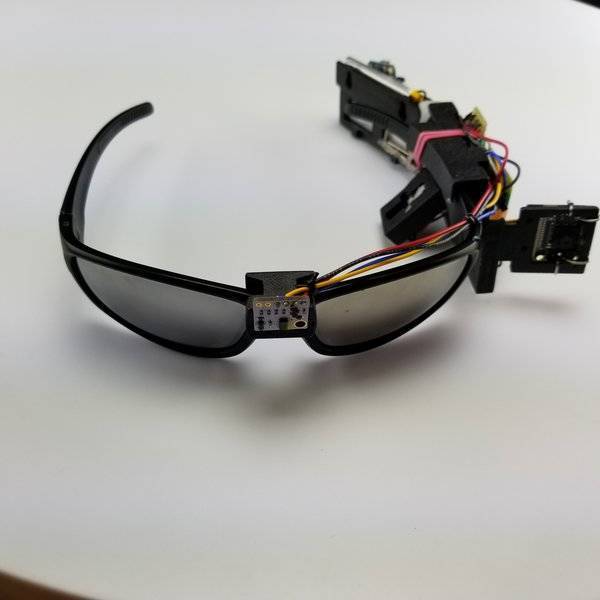
Visioneer
"AI glasses that provide traffic information and obstacle avoidance for the visually impaired. Worn as a pair of sunglasses, the ‘Visioneer’ will provide timely traffic information and obstacle detection to the visually impaired. A trained neural net will provide a level of speed and accuracy necessary for real-time recognition and response. Our design will strive to maximize ease-of-use, comfort and reliability to supplement the user’s existing navigation options and “feel for the world”. Worn as a pair of sunglasses, the ‘Visioneer’ will provide timely traffic information and obstacle detection to the visually impaired. A trained neural net will provide a level of speed and accuracy necessary for real-time recognition and response." [...]
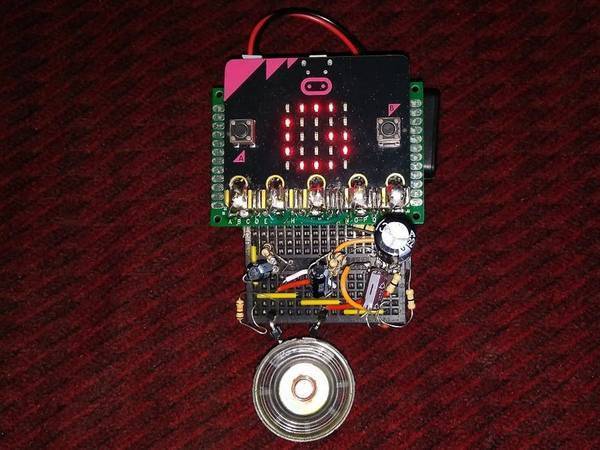
The Air Piano v2
"A rotary piano with invisible keys, based on BBC micro:bit board. An interesting toy to make Wimpy Kids in the neighborhood do some exercise The Idea I am no piano expert nor do I have knowledge about notes, all I understand is that high frequency makes twitty sounds and low ones make beatty sounds. Think about a piano that has no keys, makes some tone from movement of hand. That's what this project is all about. Working Principle The micro:bit has an accelerometer and a magnetometer. By moving the board 360 degree round and upward/downward can be sensed with these sensors." [...]

UltraSonic Proximity Alarm
"This is a quick and easy guide on how to make a proximity alarm using a HC-SR04 Ultrasonic sensor, Arduino UNO, Arduino breadboard, and a 6V DC buzzer. This sensor will beep as an object move closer. " [...]

Motion Detector With Blynk Notifications (WeMos D1 Mini + HC-SR04)
"I wanted to make a motion detector that would notify me every time my garage door is opened. I was playing with PIR sensor for a while but after having some setup issues (sensitivity x time) I decided to use the HC-SR04 sensor instead...and it works like a charm. The idea is simple: you setup the detector so when the door (or window - depends on how you want to use it) is opened, it gets in the way of the sensor so the measured distance is changed. The advantage using the UltraSonic sensor instead of PIR huge. It can't be triggered with light or mosquitoes which was the main reason I didn't want to use the PIR. What you will need: WeMos D1 mini board - eBay - USD 3.47 (other boards are possible - but be aware that e.g." [...]

Real-Time Monitoring Dice's State on Webpage
"This project shows how to monitor a dice's state on webpage using PHPoC and 3D motion sensor. " [...]

RGB Neural Net
"This projects goal was to build an intuiative and visually interesting way of seeing a neural network learn. I built it becuase I had some empty wall space. A separate computer runs the neural network training program and communicates with the RGB Neural Net over WiFi. Using the RGB Neural Net First I generate some data that I want the neural network to learn. In this case it's some multi label classification data, meaning that given an 'x' and a 'y' value (2 continuous features) a data point can either have label A, label B, both label A and B, or no label assigned to it. i.e Label A could be 'if someone likes apples', and label B couble be 'if someone like oranges', and therefore someone could like one, or the other, or both, or neither." [...]

IoT Energy Harvester using Cayenne
"The IoT Solar Harvester simplifies a problem: harvests ambient energy to power an IoT sensor and stores excess energy for later use. Energy is present everywhere -it just needs to be harvested- and the reason is simple: to free sensors and other modules from external power, making them energy autonomous to monitor and participate in many applications where cables or changing batteries are not part of an ideal solution. With the help of Internet of Things (IoT) and energy harvesting devices, wireless communications can represent the ideal communication scenario to easily and reliably connect devices in a system by bringing network capability, data collection and management with little human intervention. The IoT Solar Harvester simplifies a problem: harvesting energy from a solar panel by storing it in a rechargeable battery or super-capacitor, and then using it to power a sensor adding Internet capability to it. " [...]
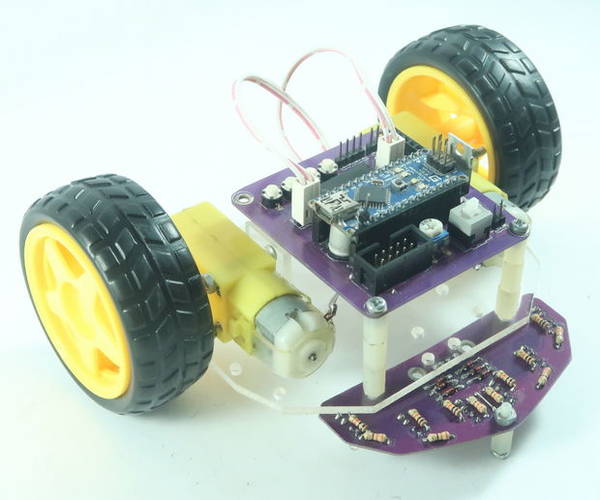
Line Follower Basic Using Arduino Nano
"Line Follower Basic using Arduino Nano is a line follower robot with arduino nano controller which using 6 line sensors. This robot is also equipped with PID controller (Proportional Integral Derivative). It makes the robot can navigate well. " [...]
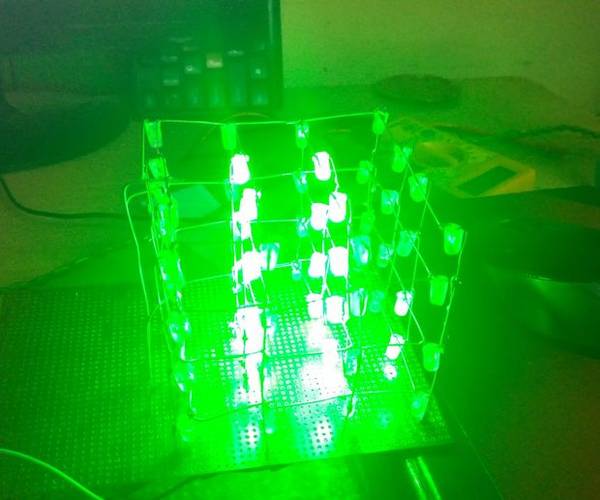
444 LED Cube
"I made this LED cube to celebrate this Diwali in a Eco-friendly way. The cube is made by using 64 Green LED's in all by stacking layers of LED mesh. The challenge which remains in making this cube is constructing the cube structure itself . Difficulty level - Medium" [...]
That's all Folks!


